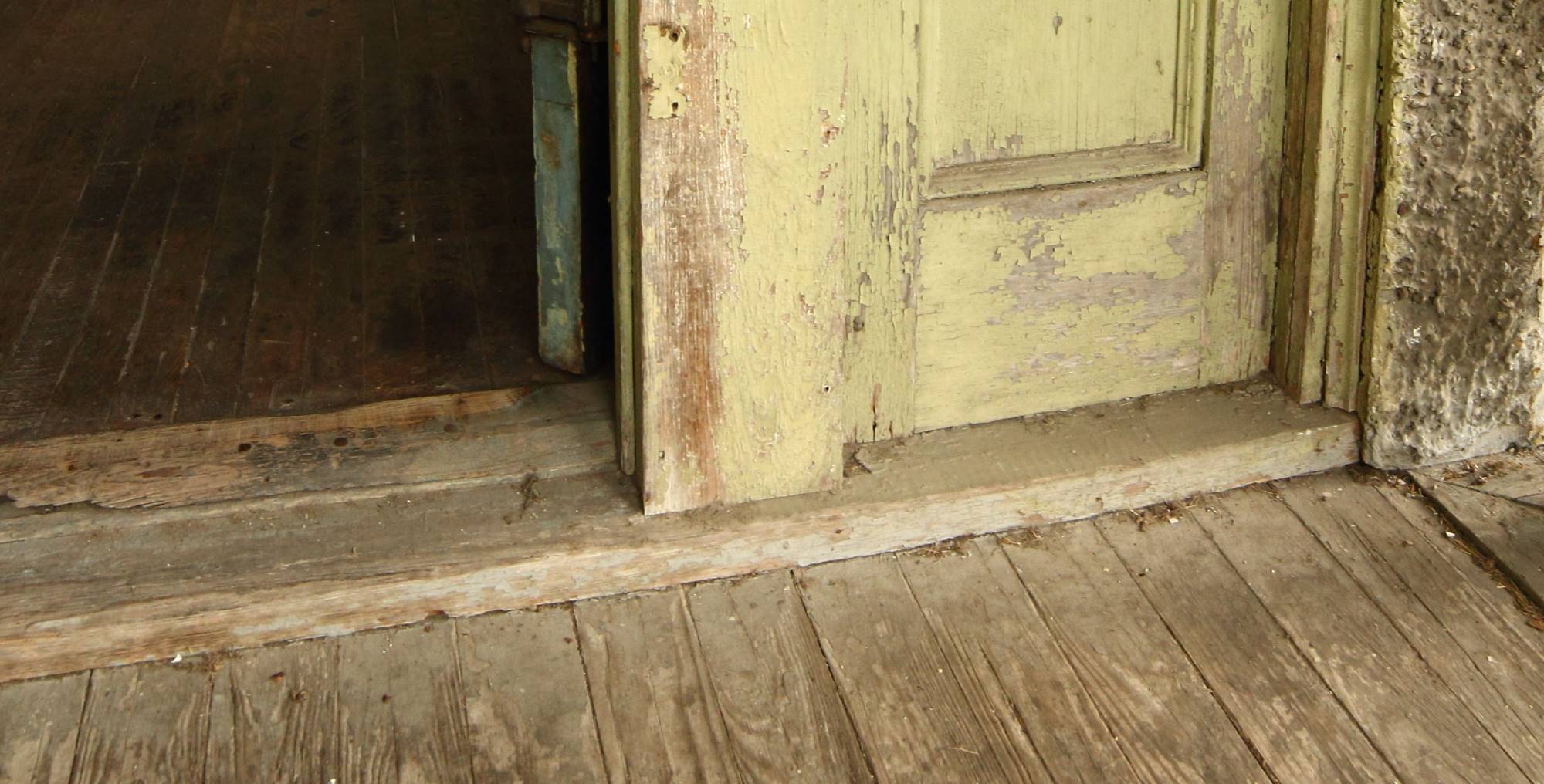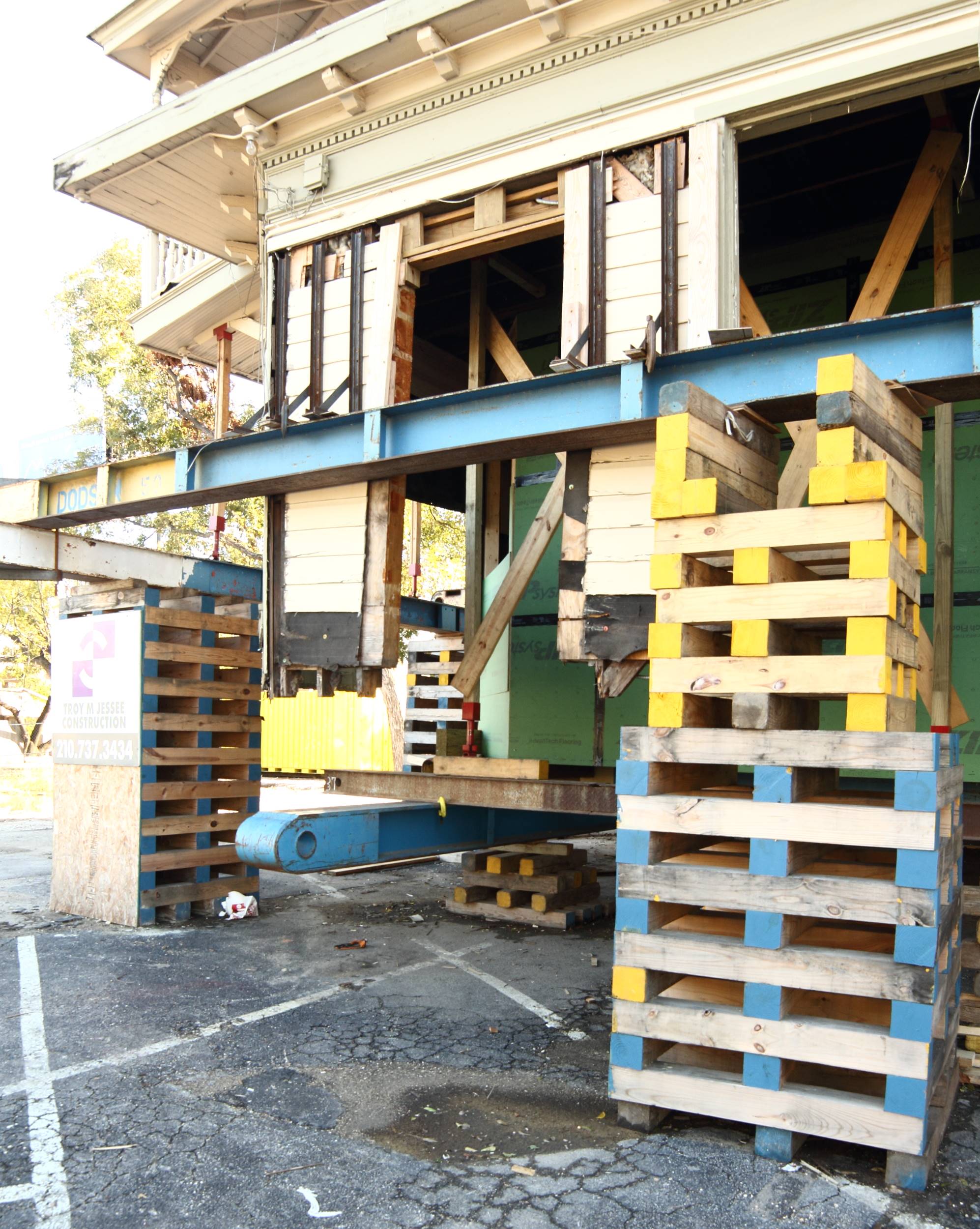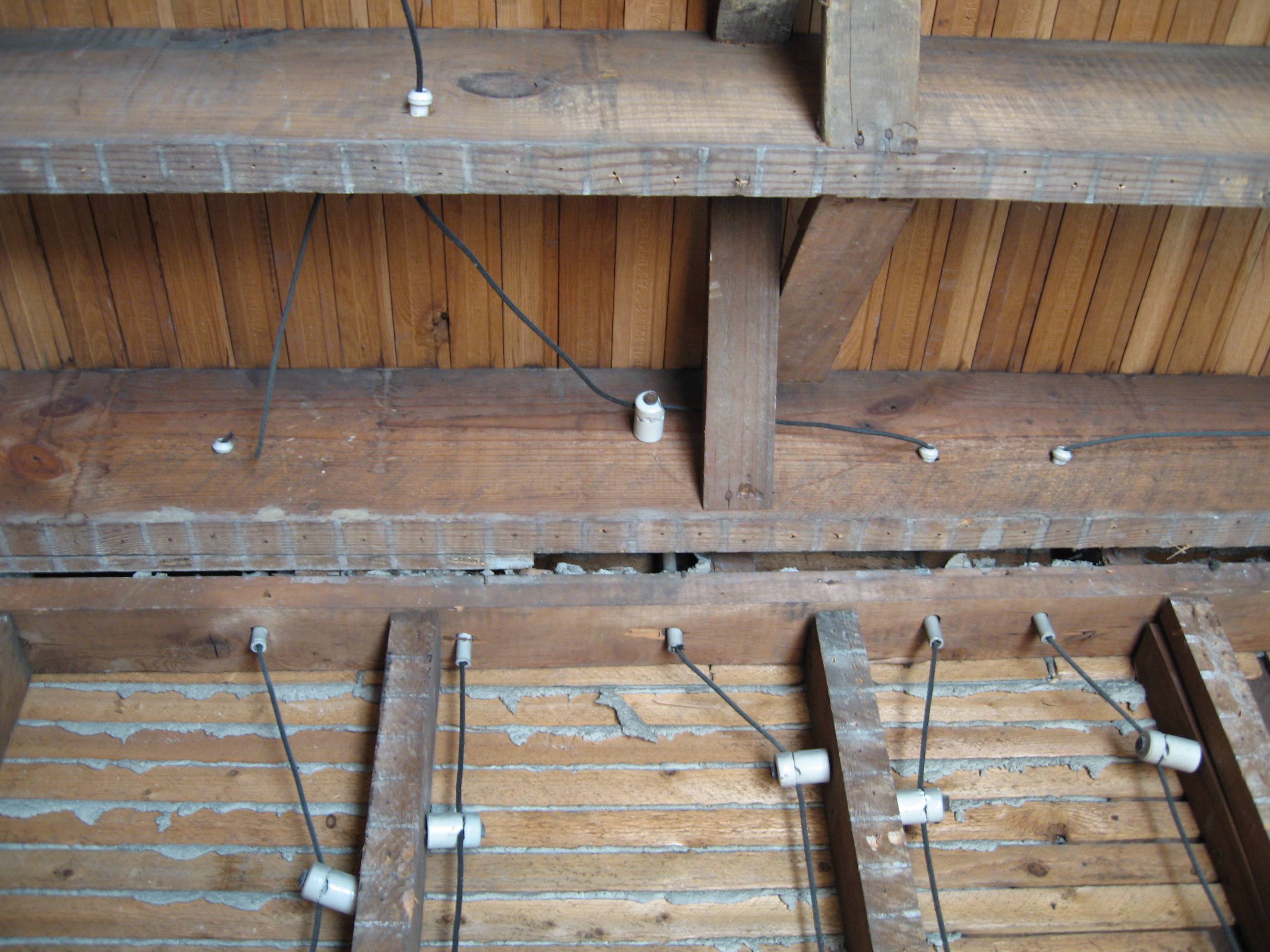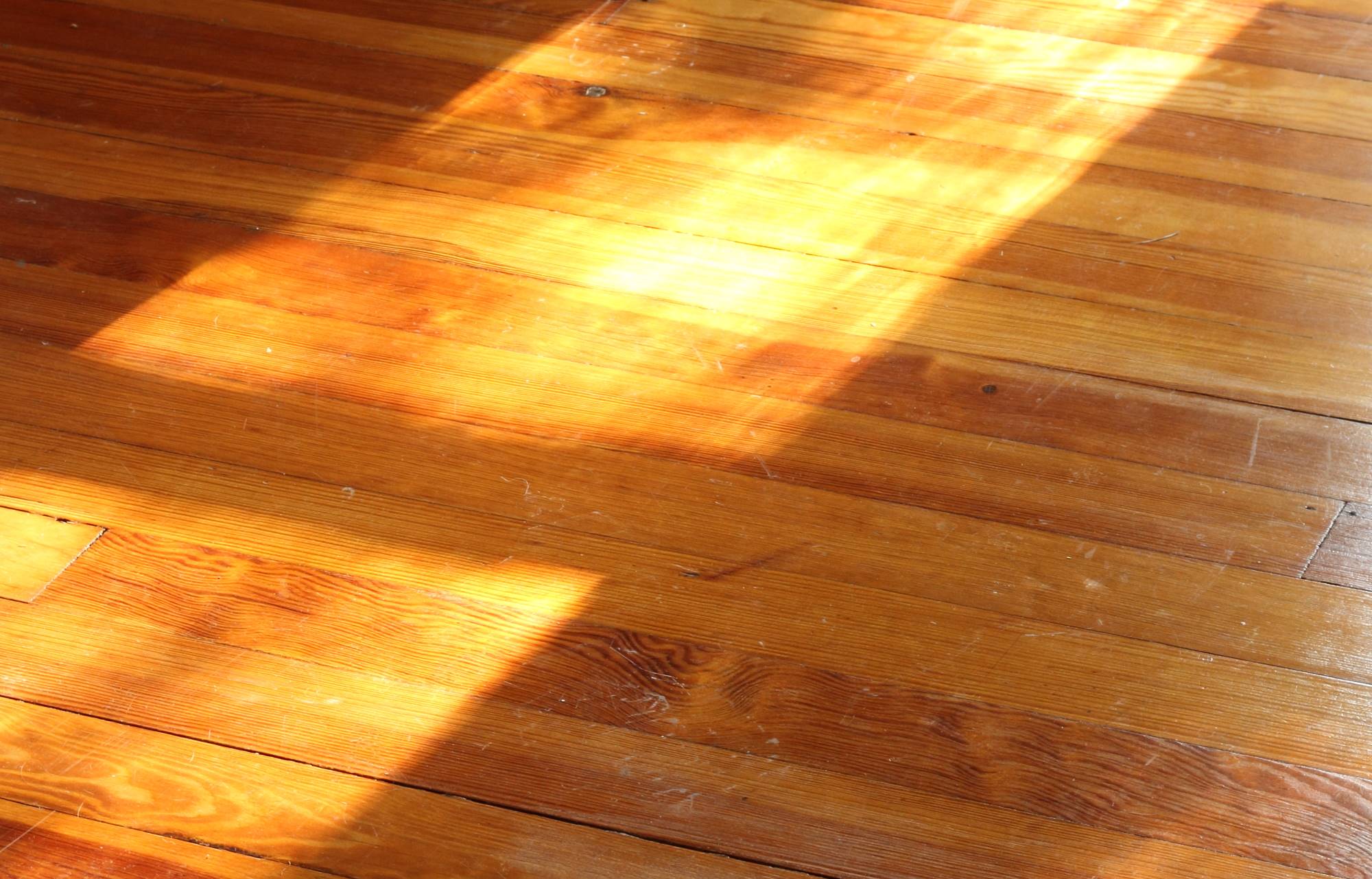Introduction
What, you thought it was that easy? Nope. Those were just the basics. What, you've already bought the house? Well, good for you. Time to get serious about this. Unless you want to just hand the project off to someone else (like Work5hop!), historic preservation and renovation are hands-on, in-depth projects. Once you get deeply into it, you'll run across situations that you never imagined. I've tried to lay out a few of them here.
1
DON'T assume that what you see now is what it was then (or even what it is NOW!). You will be shocked at how much change happens over time for most historic homes. There's a tendency to think that something is original just because it's there when you buy it. Well, maybe it is, and maybe it isn't. The truth is that the house has probably had many owners before you, each with their own ideas about how things should be. Some of those owners acted on those ideas, meaning that the house you bought is a story made up of a little bit told by each person who came before you.
Thing is, most people -- not YOU, because you care enough to be reading this -- aren't interested in the history in their homes. Many people, especially those who lived in some of the periods your home has endured, have approached an older home with the hope and intention of re-making it into something new and modern (new and modern for the time, of course). That inevitably entailed wiping out a lot of history. Sometimes careful selective demolition and reconstructive surgery can bring it back; more often, the history is utterly and completely lost.
By Adam Jones Adam63 (Own work) [CC BY-SA 3.0 (http://creativecommons.org/licenses/by-sa/3.0)], via Wikimedia Commons
By Adam Jones Adam63 (Own work) [CC BY-SA 3.0 (http://creativecommons.org/licenses/by-sa/3.0)], via Wikimedia Commons

2
DON'T make things worse with uninformed repairs. Find a skilled craftsman for repairs, not a handyman. There are few better ways to cause damage to historic stone walls than by using modern mortar, for example, and to sandblast brick is to sign its death warrant. And that guy who seems like he could do just fine with a minor task, like fixing a sticking door, might end up irreparably damaging your original woodwork rather than telling you that your real problem is a deteriorating foundation beam. Work with experts if you care about your house.
Even a craftsman who might do well within a particular area of expertise might end up out of his or her depth in a different area of expertise. An accomplished finish carpenter could touch up your original plaster with a PVA-based primer, for example, and you'll end up with peeling paint. Find an architect who is familiar with older materials and how to treat them. Our drawing packages for preservation contain extensive general notes addressing just these kinds of situations.

3
DO look carefully at foundation, grading, landscaping, and roofing issues. Correct those problems first. If your foundation is in bad shape, there's no point in spending time or money doing much of anything before you fix it. If your grading is funneling water beneath the house or if trees are affecting your foundation, any foundation repairs won't last until you've fixed those things. And if your roof is leaking, fix it before it creates a million other problems.
That said, you should just accommodate yourself to a bit of foundation movement and its resultant cracking. Much of San Antonio, as well as parts of Austin and the entire Gulf Coast, is underlaid by relatively unstable soils which tend to shift with changing levels of moisture. It's certainly possible to install a foundation which doesn't move around, but you probably can't afford it. So the cold reality is that you may see some cracking from time to time.
Former Liberty Bar and Boehler General Store, now missing its foundation and lower floor. Your house probably won't be this bad.
That said, you should just accommodate yourself to a bit of foundation movement and its resultant cracking. Much of San Antonio, as well as parts of Austin and the entire Gulf Coast, is underlaid by relatively unstable soils which tend to shift with changing levels of moisture. It's certainly possible to install a foundation which doesn't move around, but you probably can't afford it. So the cold reality is that you may see some cracking from time to time.
Former Liberty Bar and Boehler General Store, now missing its foundation and lower floor. Your house probably won't be this bad.

4
DO replace plumbing, electrical, and other systems. Listen, I love history. I love my historic house, and I think it's better than a modern house in many, many ways. But not its wiring or plumbing. Old wiring is sometimes dangerous and sometimes a disaster waiting to happen. Old plumbing is frequently also a disaster waiting to happen, and if not, continually problematic. Rip them both out entirely and use modern materials and methods to replace them. And don't feel bad about it -- this is one area where older isn't better. If you feel bad about it, use your ratty old rodent-chewed cloth-covered electrical wire to make art. Just don't run electricity through it.
Image: Knob and tube wiring, circa 1930s, typical of many homes of that era in this region. By Laura Scudder (Laura Scudder) [GFDL (http://www.gnu.org/copyleft/fdl.html), CC-BY-SA-3.0 (http://creativecommons.org/licenses/by-sa/3.0/) or CC BY-SA 2.5-2.0-1.0 (http://creativecommons.org/licenses/by-sa/2.5-2.0-1.0)], via Wikimedia Commons
Image: Knob and tube wiring, circa 1930s, typical of many homes of that era in this region. By Laura Scudder (Laura Scudder) [GFDL (http://www.gnu.org/copyleft/fdl.html), CC-BY-SA-3.0 (http://creativecommons.org/licenses/by-sa/3.0/) or CC BY-SA 2.5-2.0-1.0 (http://creativecommons.org/licenses/by-sa/2.5-2.0-1.0)], via Wikimedia Commons

5
This one's going to be painful. DO prepare for your project to cost more than you want or expect it to. If you hire a knowledgeable professional, hopefully the "expect" part will be pretty close. But there's no way around it: construction these days, in many markets across the nation, is expensive. There's a lot of construction going on, and indications are that that will continue. Good work on historic homes falls at the top end of the spectrum of residential construction costs, too -- it's a lot harder to find the skilled tradespeople you need for the work, and basic economics pushes up the price of things that are harder to do. It's also more expensive to match historic materials: good longleaf pine, the most common flooring material in this area and time period, costs three to four times what engineered hardwoods do.
So think of it as a long-term investment in the place you'd like to live in forever. Don't think of spending on historic homes in terms of flipping or short-term propositions, because those doesn't make financial sense. Buy in to keep.
So think of it as a long-term investment in the place you'd like to live in forever. Don't think of spending on historic homes in terms of flipping or short-term propositions, because those doesn't make financial sense. Buy in to keep.
